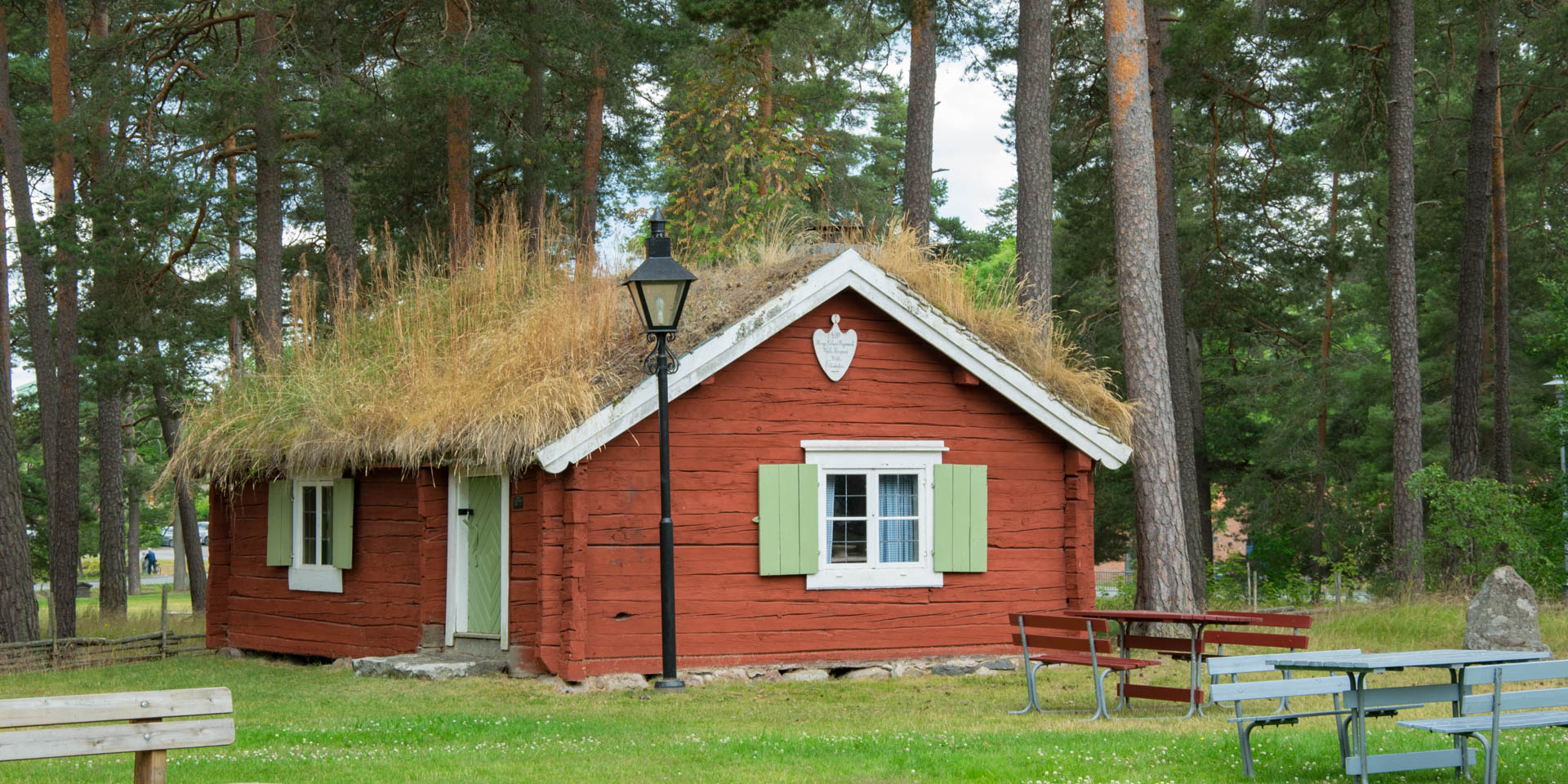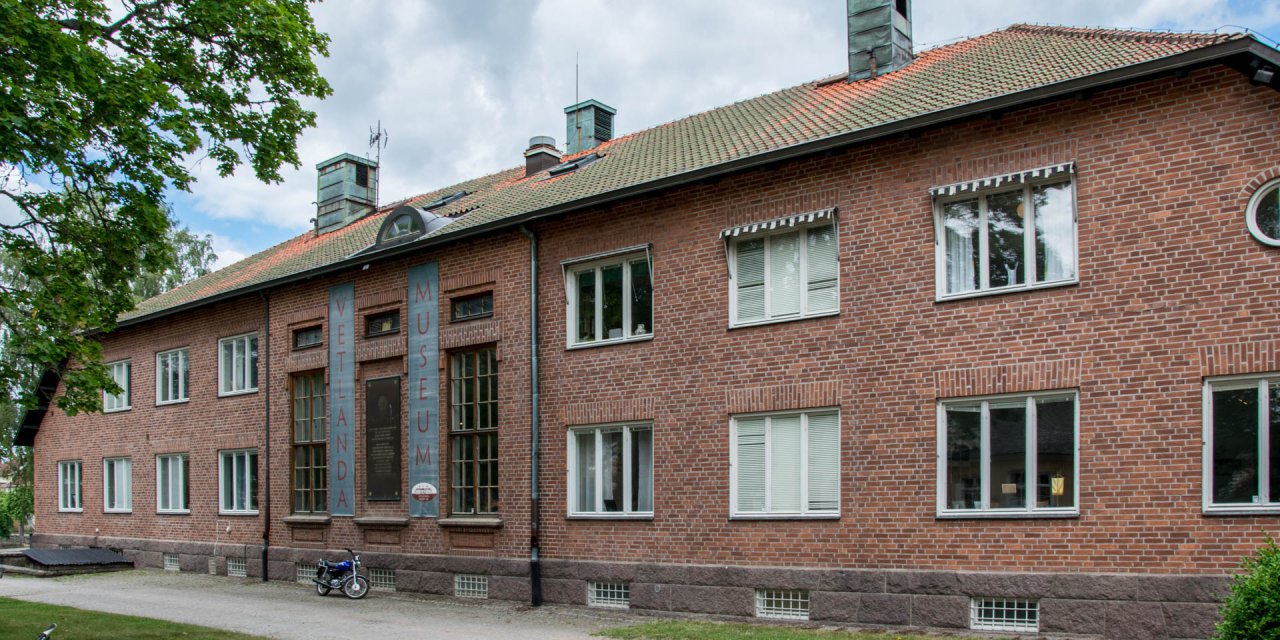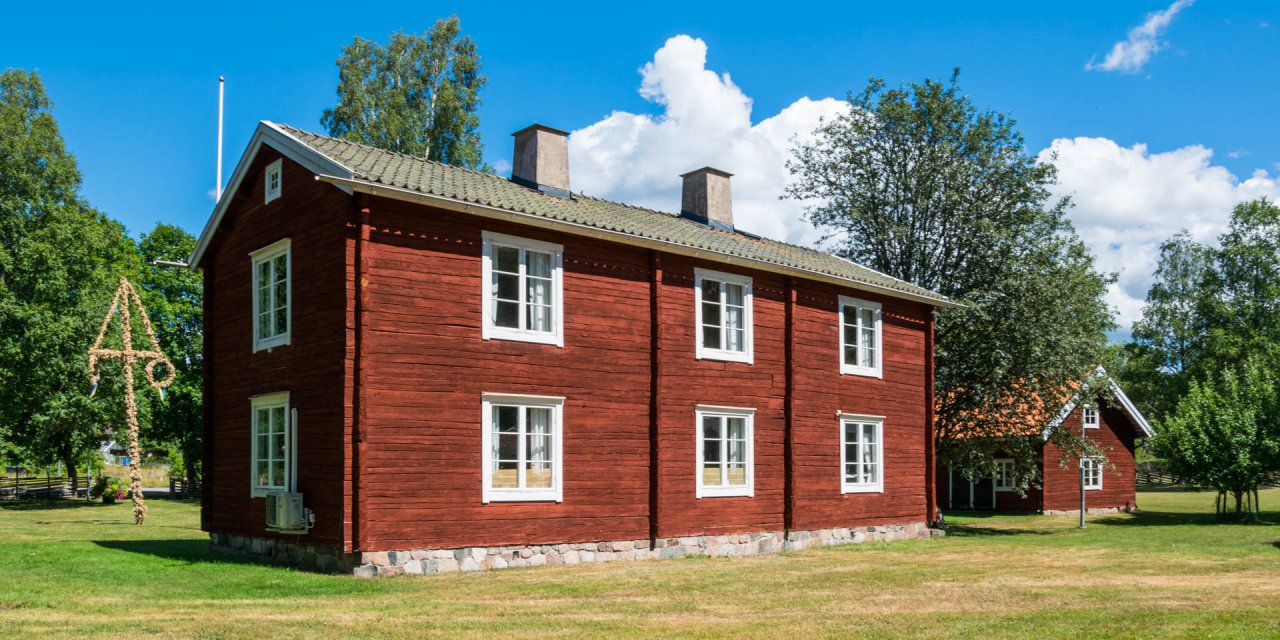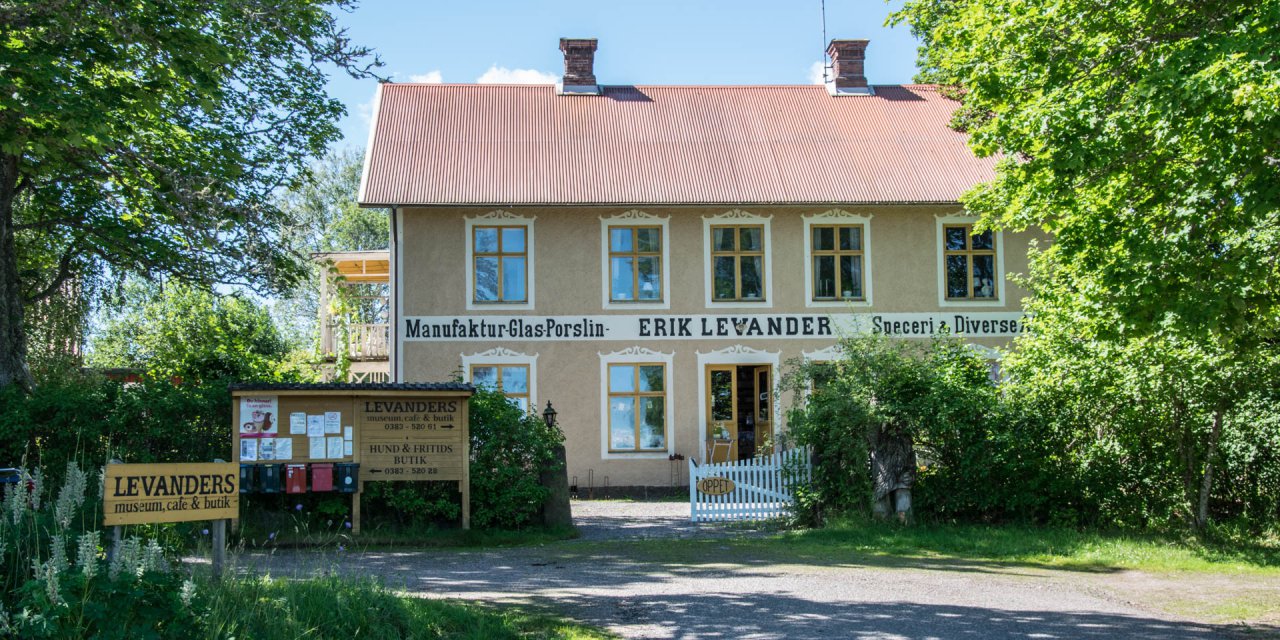

Forngården
Open-air museum in Vetlanda
The open-air museum Forngården is situated in park-like grounds just on the edge of the town centre of Vetlanda and displays a varied ensemble of eight historic buildings from the region of the Småland municipality of Vetlanda Kommun.
Since the mid-1930s, the museum Forngården, also known regionally as Njudungs Hembygdsmuseum, has been located on the site in the centre of Vetlanda. The museum is run by the local history association Hembygdsföreningen Njudung, which was founded in 1910. Over the decades, the members of the association have dismantled buildings from the area in their original locations and rebuilt them in the museum, stylishly furnishing them with historical furniture, household items and other objects, and taking care of the preservation of the historical buildings.
The buildings at Forngården
All the museum buildings are arranged more or less evenly around a central lawn, framed at the edges by tall trees. From the stage at the southern edge of the park, a straight view looks north to the so-called Reppardarhuset. The stately two-storey wooden house dates from the late 18th century and was once the main house of a large farm. The building was inhabited until the early 1930s and has been in the museum since 1935.
The long, barn-like building that stands slightly off to the side behind the large farmhouse is the Mogärdelängan. The building was once the home and workshop of a saddler and was moved to the museum between 1980 and 1984. Today it houses several permanent exhibitions with historical machines and tools from old crafts in the region.
On the west side of the farmhouse is the small Boltastugan, which is used as a café with outdoor service in the summer. The low hut dates from the 17th century, used to stand on the country road next to the church of Vetlanda and has been part of the museum since 1938. A little further west is the former copper smithy Kopparslagarverkstad. The two-storey building dates from the early 18th century and was the home and workshop of a coppersmith. The coppersmith's workshop, which has been in the museum since 1954, shows a complete historic tin smith's workshop on the ground floor and a dwelling furnished in 1920s style on the upper floor.
The low hut between the smithy and the stage is a so-called Soldattorp from the 17th century. These huts, inhabited by soldiers, existed in large numbers in Sweden from the 17th to the 19th century and were an important part of the provisioning of professional soldiers in peacetime. A fixed number of farmers had to provide for the upkeep of a soldier by giving him work in peacetime and by providing a place to live, which also served to provide for the soldier's family.
On the other side of the stage is a historic market hut from the 18th century. These kinds of huts used to be permanently installed in the local marketplaces and served both as stalls at the markets, which took place several times a year, and sometimes as temporary accommodation for travelling merchants.
Between the market stall and the large farmhouse stands a historic shed, a so-called Loftbod from the 17th century. Such sheds with the characteristic overhanging upper floor were typical of Småland since the Middle Ages and were used on the farms to store the harvest and also to house equipment. During harvest time, the attic on the upper floor often also served as a place for the harvest workers to sleep.
The school museum at Forngården
To the north of the museum, slightly apart from the other buildings, is the Vetlanda Skolmuseum in a building constructed in 1992 in the style of an old school. Unlike the other museum buildings, the school museum is run by the Vetlanda Museum and displays an extensive collection of historical school furniture and inventory from across the municipality.
Forngården: Opening hours & admission
Opening hours
Sunday: 14:00 – 17:00
Admission
Last update: 02/2023 | Errors and omissions excepted.



